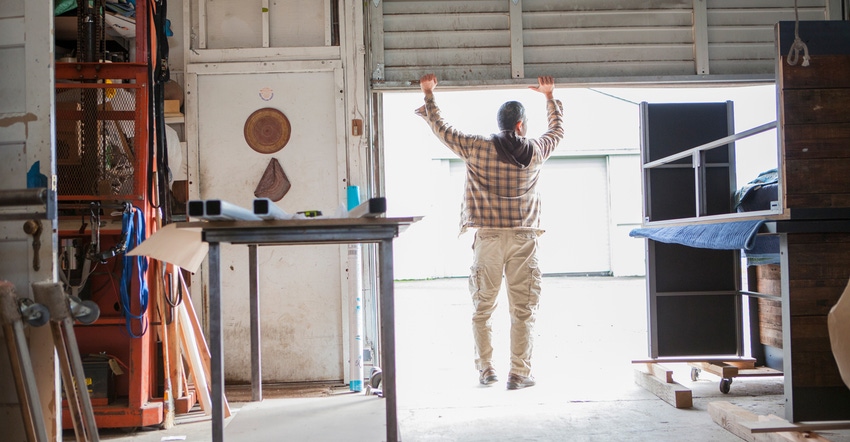
You see the signs posted everywhere: “Help Wanted.”
“We are short-staffed. Please be patient.”
“Closed due to staffing issues.”
Yes, Covid-19 has made an impact, causing many workers to reconsider their stressed working conditions, or forcing them to stay home due to illness or lack of child care. As unemployment checks and economic impact payments arrived, some laid the blame for labor shortages — and continue to do so — on lazy people, or on the current government leadership for providing “easy” money.
Tossing out those comments shows a lack of understanding. The root of the workforce problem has been growing for some time. It’s quite simple: There aren’t enough people to fill jobs.
The data support this premise, as presented by Julie Tesch, president and CEO, Center for Rural Development and Policy. Tesch spoke at the annual Minnesota Farm Bureau Federation meeting in November and shared research done by CRPD.

Julie Tesch, president and CEO, Center for Rural Policy and Development

First, Tesch offered a few positive workforce facts about Minnesota. Minnesota ranks in the top five state for the lowest unemployment. It ranks in the top five for labor force participation rate. It was a top-performing state during the recessions. And Minnesota has the fifth-most diverse economy in the U.S., with agriculture playing a major role in that.
Shrinking workforce
However, like other states, Minnesota is faced with a shrinking workforce that has been on the decline for the last two decades.
“Baby boomers are retiring, and the pandemic blew up everything,” she said. On top of that, young people continue to leave the state, and government immigration policies continue to plague employment.
“Generation X hasn’t supplied the [workforce of] 16- to 20-year-olds that we need to keep the workforce going,” she added.
So, what does our current workforce look like?
Tesch shared interesting data from the Minnesota State Demographics Center:
• The number of Minnesotans turning 65 in this decade — about 285,000 — will be greater than the past four decades combined.
• Around 2020, Minnesota’s ages 65-plus population is expected to eclipse the ages 5 to 17 K-12 population for the first time in history/
• The total number of older adults ages 65-plus is anticipated to double between 2010 and 2030. By the latter date, one in five Minnesotans will be an older adult, including all baby boomers.
Finding workers in-state will be a challenge, given the declining workforce population. Births peaked in the state in 2007, with more than 73,000 babies born, and we have not hit that number since. In 2017, 68,603 babies were born in Minnesota.
“So, fundamentally, a shift happened,” Tesch said. “We’ve heard for years, ‘We need jobs.’ It’s great we hear legislators saying we need jobs. Now we need people.”
The data are clear, she said. Job vacancies, which vary depending on the region, are at unprecedented levels in northwest and northeast Minnesota. The wage gap in rural versus urban areas is closing. The seven-county metro average stands at $17.12 per hour while the outstate wage ranges from $14.62 to $16.17 per hour, with the latter also having a lower cost of living. A significant number of job openings are for full-time employees, offering health insurance and other benefits. Another plus? More employers are offering immediate on-the-job training to entice new hires.
“Workers are in the driver’s seat now,” Tesch said. “They get to make choices about where they want to work. They can go where they are treated an/d paid well.”
Tesch noted that there are some segments of the workforce that want to move and change jobs. In a University of Minnesota survey, the rural brain drain seems to have plugged. People ages 30 to 49 are the ones who are moving outstate. Roughly a quarter of those surveyed said they lived in the community, and a quarter of them have children. Thirty percent moved for jobs.
For rural communities in need of workers, Tesch encouraged influencers to step up, make positive change and promote their areas. Retention of young people is crucial, too. She says schools and parents are key in this area.
“Do we do a good job of saying ‘Go do your own thing, and come back if you want?’’’ she asked.
Hosting regional job fairs, businesses providing apprenticeships and internships, and local schools offering trade and tech training will help with local workforce retention.
A workforce that stays in place also requires several basics in the community, such as affordable housing and day care. It will be up to community leadership to figure out housing options, and where people can live. The business of child care would benefit from a government-employer partnership to resolve.
“Housing and child-care issues became crystal-clear during Covid,” Tesch said. “These are two things we need to focus on for economic development.”
About the Author(s)
You May Also Like






